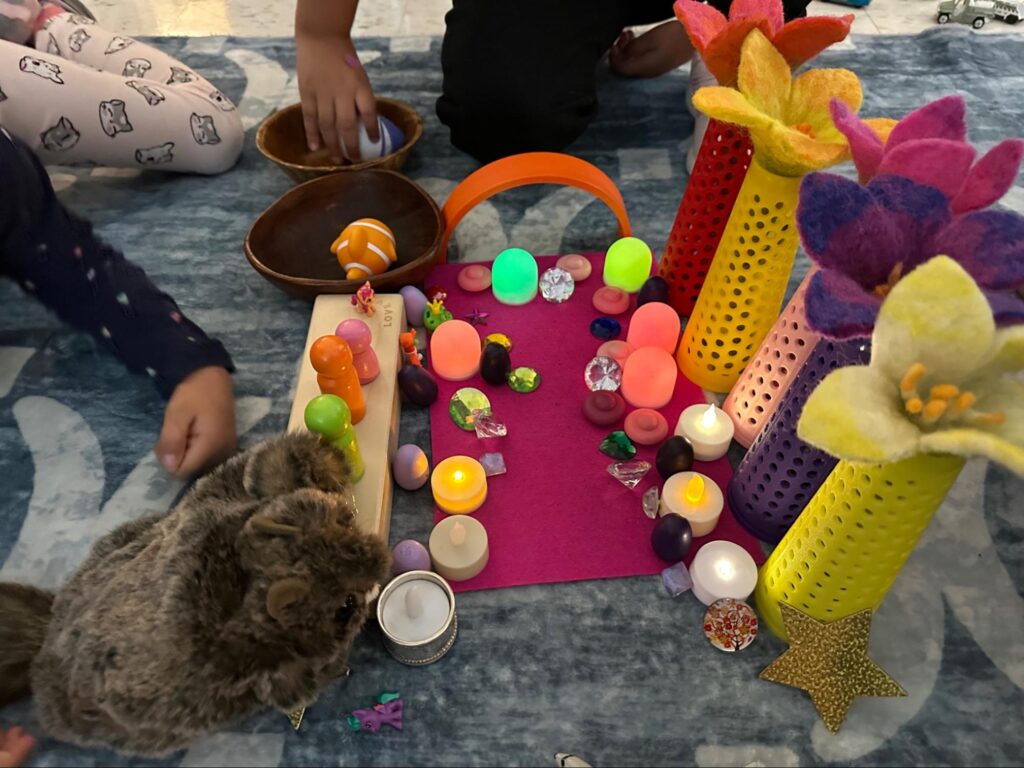Children work on a collaborative story during Writers Playshop using loose parts.
They included facts they’ve learned in science about the needs of plants and animals.
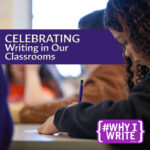
This blog post was written by NCTE member Katie Keier as part of a blog series celebrating the National Day on Writing®. To draw attention to the remarkable variety of writing we engage in and to help make all writers aware of their craft, the National Council of Teachers of English has established October 20 as the National Day on Writing®. Resources, strategies, and inclusion in a blog post does not imply endorsement or promotion by NCTE.
“I have a book to make. I want my story to live forever!”
“Come listen to my story!”
“OH! I’m going to put that in my story today!”
Kindergarten writers are a joyful and passionate bunch, and words like these ring out all day in our classroom. Their brains and imaginations are bursting with ideas, and they can’t wait to make stories and make books. Most kindergarten children know picturebooks well, and when given an invitation to make books, just like Donald Crews, Mo Willems, Jan Thomas, or any author they are familiar with, they eagerly take on the challenge to create their own books.
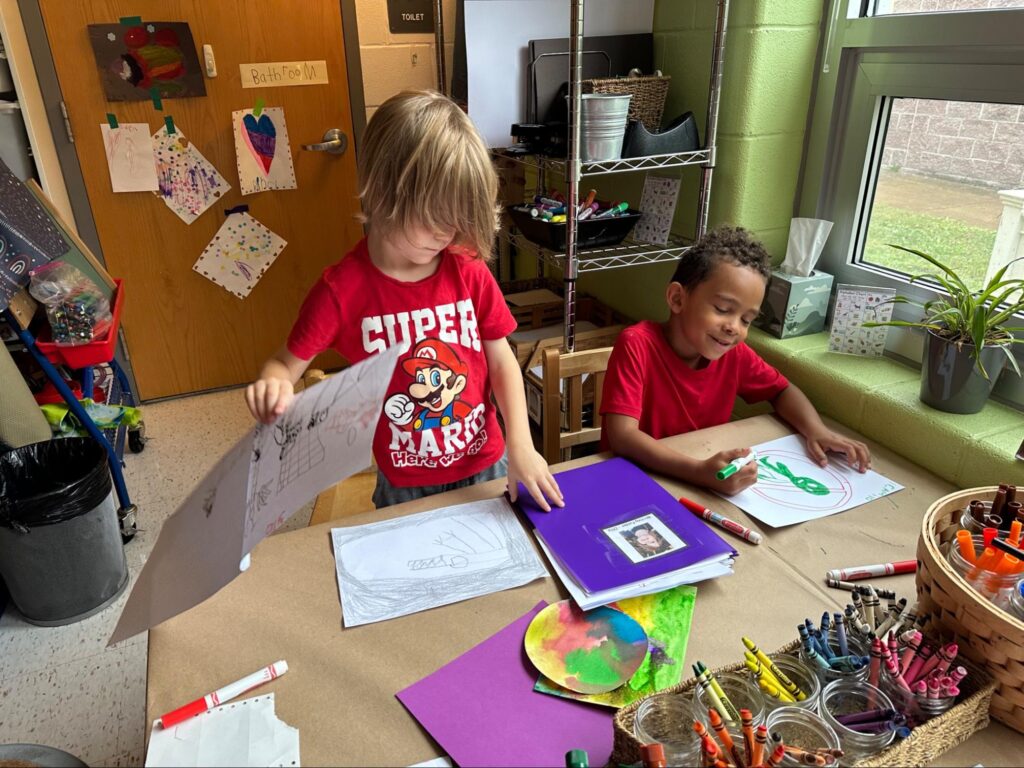
Kindergarten writers make books about aliens and the Titanic during Writers Playshop.
I teach kindergarten in a Title I public school with a high percentage of multilingual learners. We begin our Writers Playshop on the first day of school and continue every day. After an engaging read-aloud, I invite the children to find a story in the materials in our room. And if they like, they can put their story into a book to make it live forever. The children go off and eagerly begin finding stories. I have never had to prompt a child or tell them what to make a book or story about. Children are bursting with ideas for stories and things they know. They can’t wait to share these things with others. They just need to be given the time, choice, materials to create, an audience to share their stories with, and a belief that they can do this.
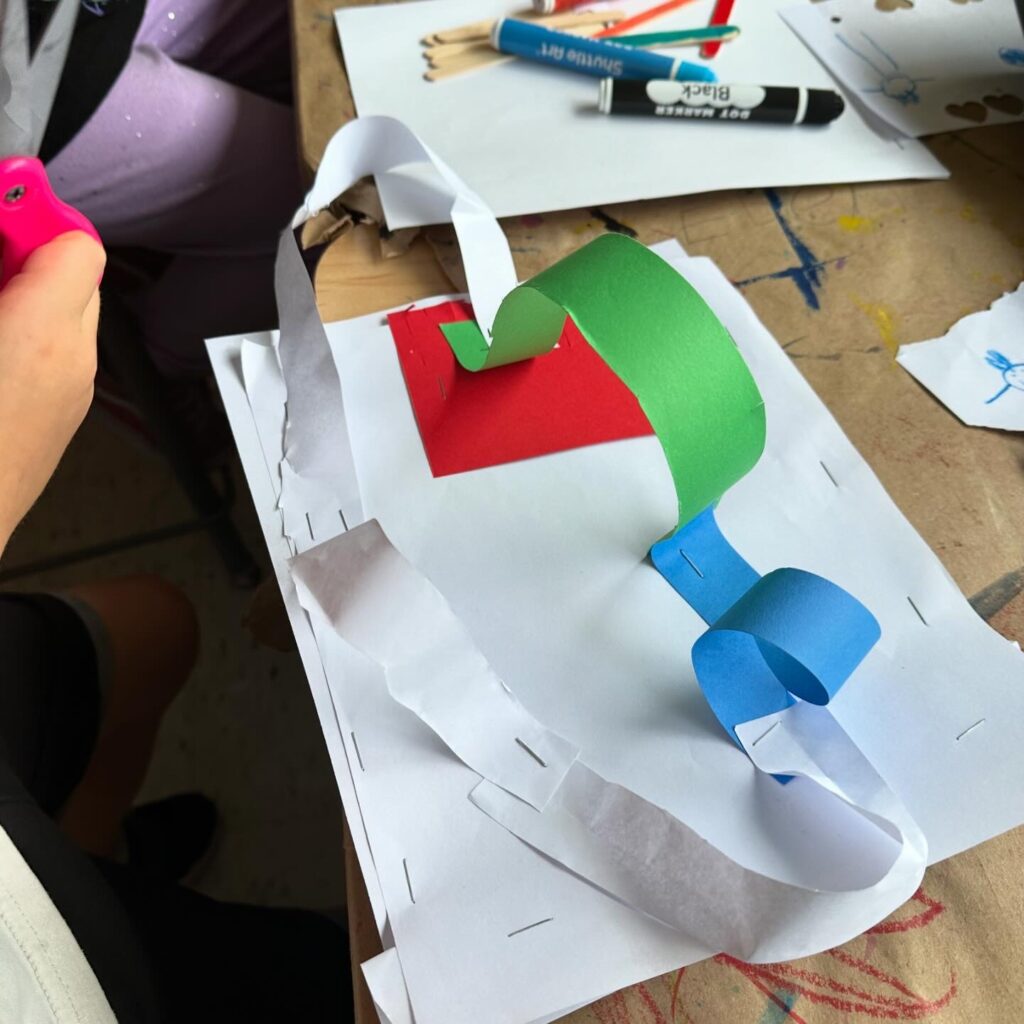
This writer made a story about riding a rollercoaster after experimenting and playing with different ways to fold and attach paper.
Writers Playshop quickly becomes a favorite part of our day as children are invited to find stories—wherever they might live. It follows a predictable structure each day. During this time, you will find children engaged in making stories with loose parts, finding stories in paint or clay, building stories with Legos or Magnet Tiles, finding stories in the sand or light table, and making books. You will find them reading as writers, sharing their books, and making plans.
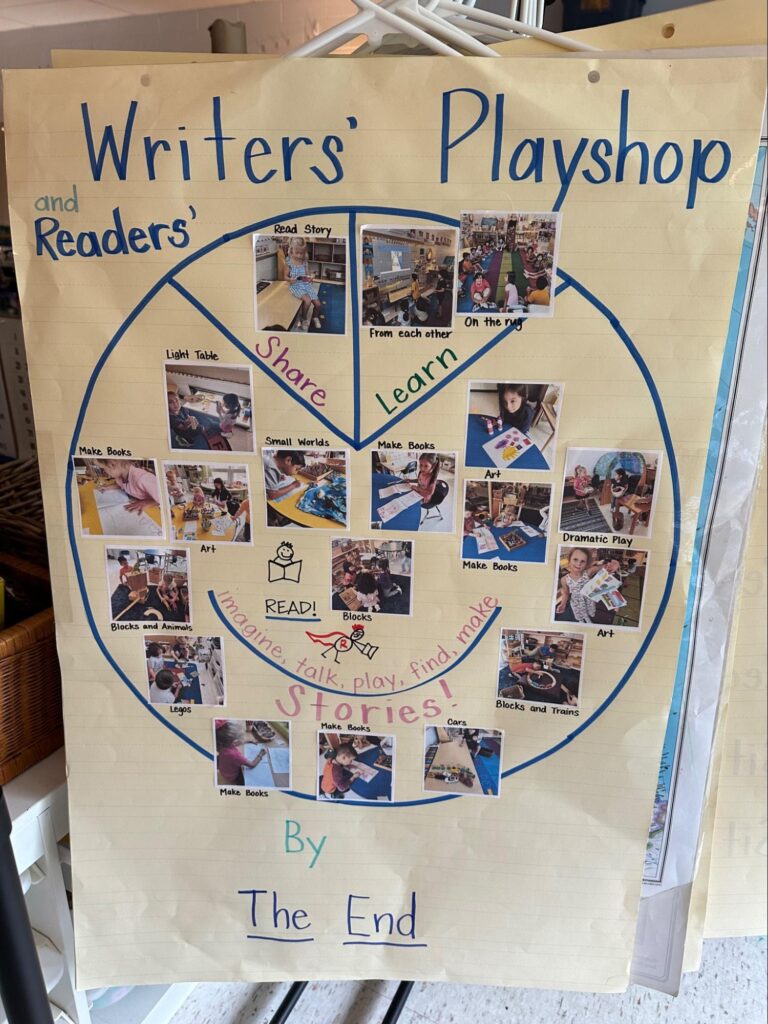
Our co-created anchor chart for Writers Playshop. This idea was inspired by Michelle Kay Compton and Robin Chappele Thompson in Storymaking: The Maker Movement Approach to Literacy for Early Learners.
This idea of finding stories, making stories, and writing them down starts to be a common way of thinking throughout the days. Children start to notice stories happening on the playground, at lunch, during math, and at home. They can’t wait to tell these stories, and very soon all of the children are making books to record their ideas and their stories for others to read. They become authors and illustrators.
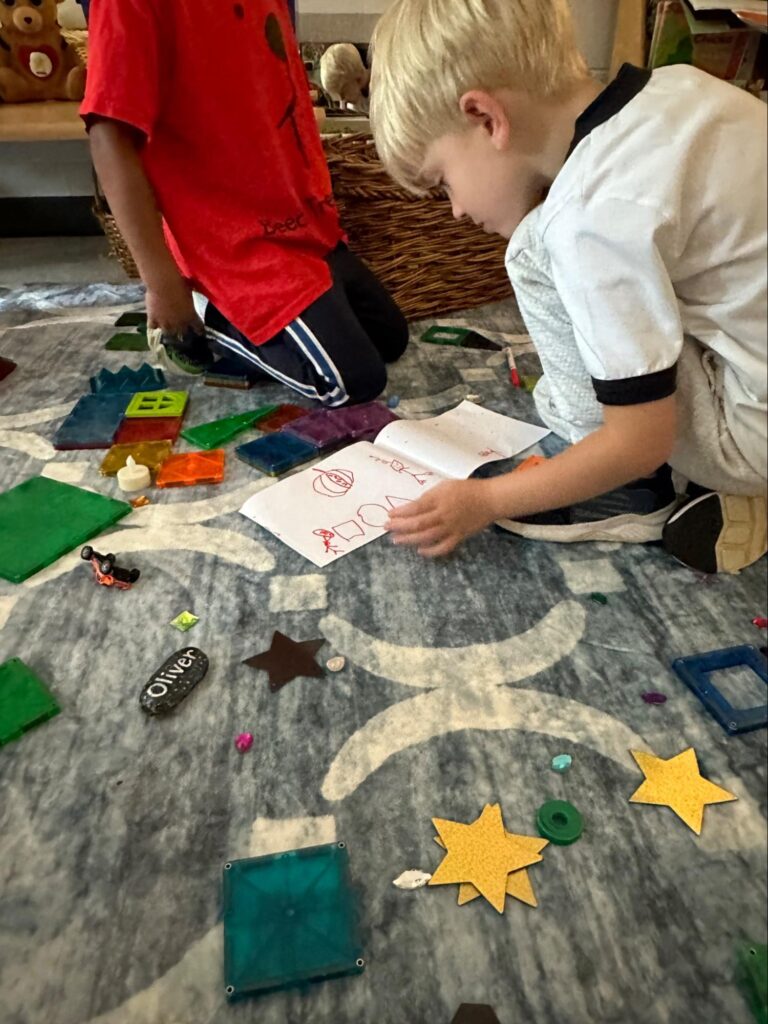
This writer shares his book with a friend as he uses loose parts to construct the story. He is making the story with loose parts and writing it into a book simultaneously.
I believe children are capable and competent, and I trust them as they go about being writers and storymakers. My job during Writers Playshop is to observe, document, and be a curious audience, nudging children forward as writers. I ask children if I can listen to their story. I ask them if I can listen to them read their book to me. I watch them closely and make notes of how they are interacting with materials and how their story is evolving. I am there as an observer and to assist when needed. I will often be asked how to spell words as children make books. I don’t spell words for children, as I believe that makes their book unreadable to them in the future and it takes their power and confidence as writers away. I will coach them in ways they are familiar with to help them write words in their books. For example, I might ask them to say words slowly and write the letter sounds they hear. I might refer them to an anchor chart in our room. I show them how they can sound out words and write what they hear—connecting this work to the work we do during phonics instruction. I ask them to do their best as a five-year-old writer. And I celebrate every little move they make as a writer and a storymaker.
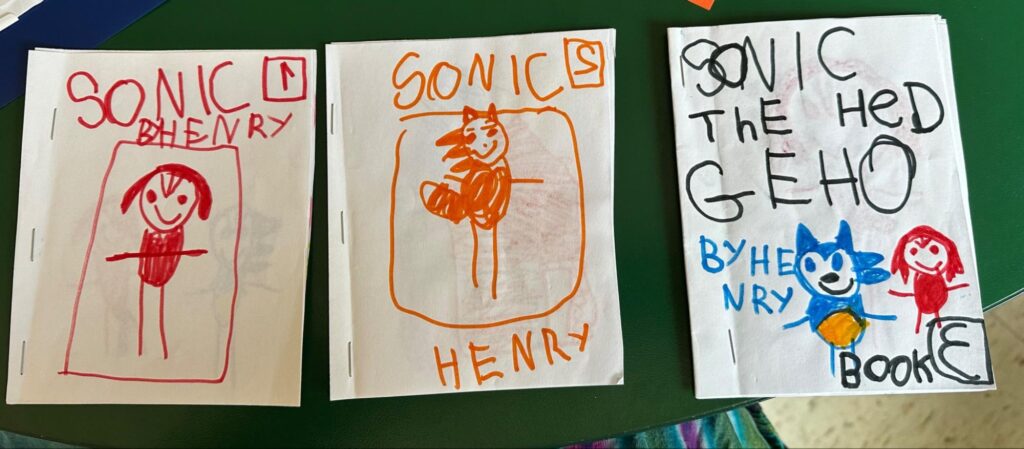
A series about Sonic the Hedgehog written by a talented kindergartener author and illustrator.
Writers Playshop is a joyful time of authentic literacy learning. Trusting children, believing them to be capable and competent, and supporting their talk and play as storymakers gives them the space to grow and become strong, confident writers. In the words of a kindergartener, “Ms. Katie, Writers Playshop is the BEST! I can make stories and books, and I am an author and an illustrator. I wish we could do Writers Playshop all day long for the rest of forever!”

Katie Keier has been a classroom teacher, school librarian, and literacy specialist in grades preK–8 for 33 years. She is currently a kindergarten teacher in a Title I school near Washington, DC. Katie is passionate about play, literacy learning, equity and access for all learners, arts integration, and Reggio Emilia-inspired pedagogy. She is the coauthor of Catching Readers Before They Fall, writes on the www.catchingreaders.com blog, and posts as @bluskyz on Instagram and Threads. When she is not learning and playing with young children, she can be found running and playing on the mountain trails of Virginia.
It is the policy of NCTE in all publications, including the Literacy & NCTE blog, to provide a forum for the open discussion of ideas concerning the content and the teaching of English and the language arts. Publicity accorded to any particular point of view does not imply endorsement by the Executive Committee, the Board of Directors, the staff, or the membership at large, except in announcements of policy, where such endorsement is clearly specified.

